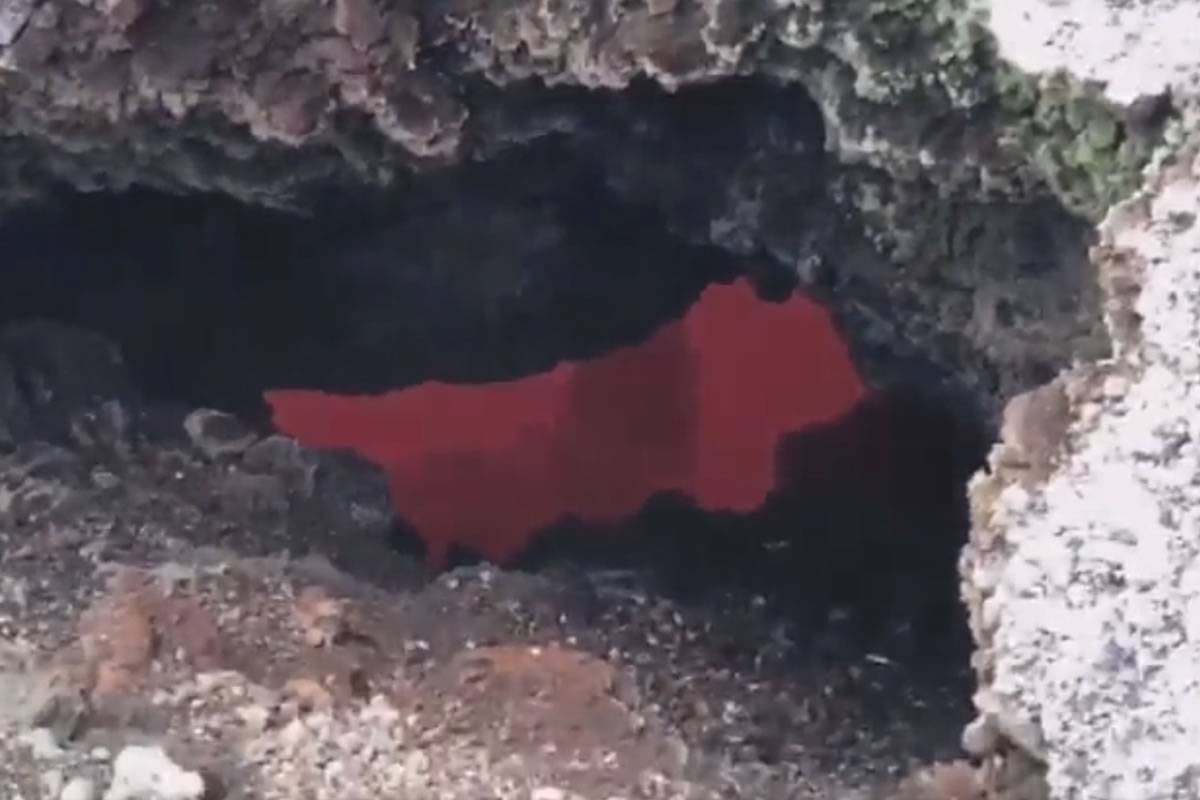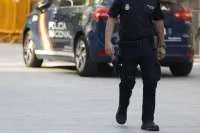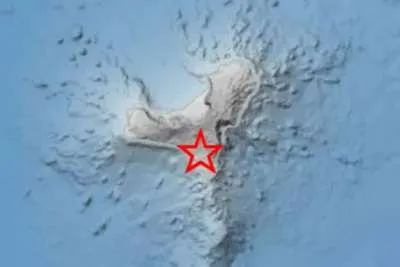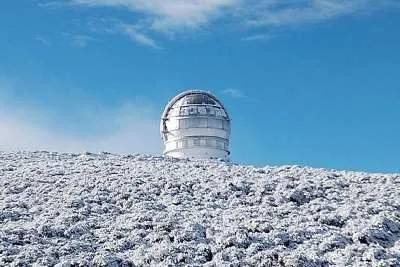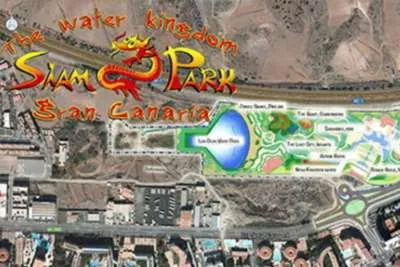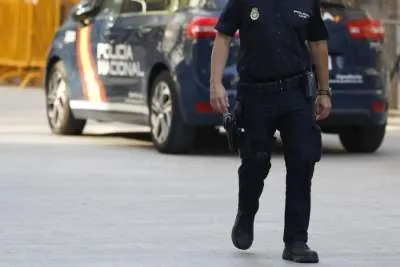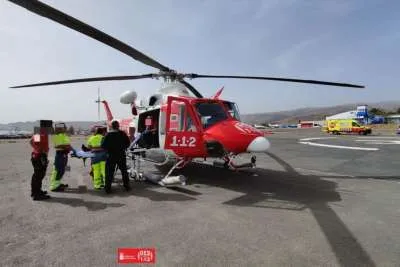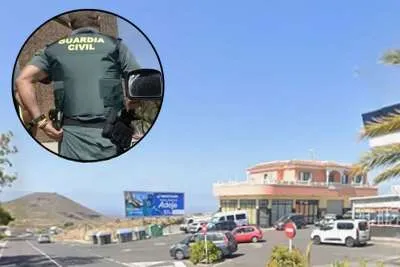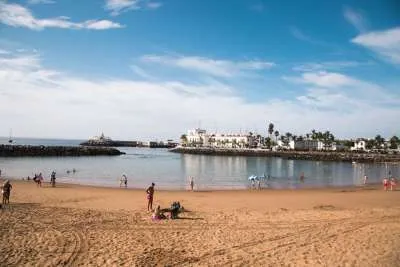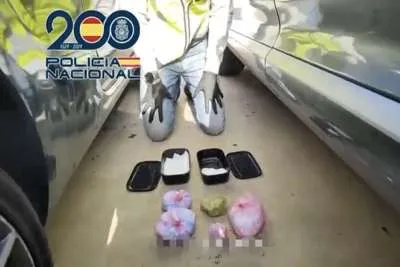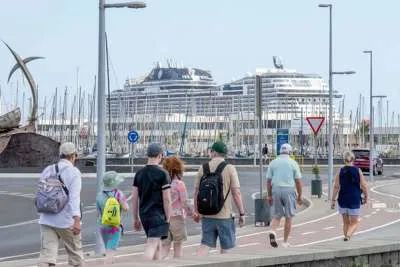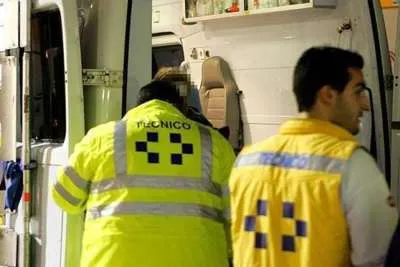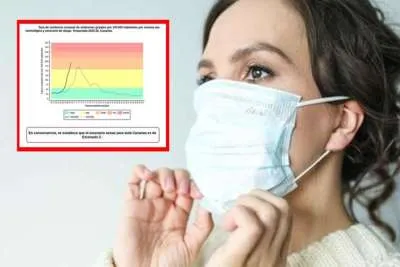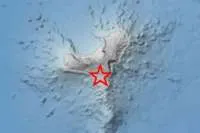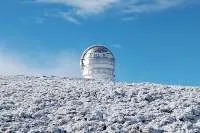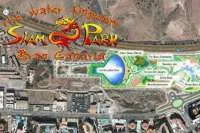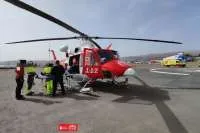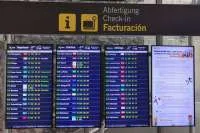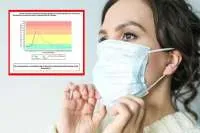VIDEO: Five months after the end of the eruption on La Palma you can still see molten lava
- 06-05-2022
- Tenerife
- Canarian Weekly
The Institute of Volcanology of the Canary Islands (INVOLCAN) has reported that almost five months after the end of the eruption in La Palma of the Cumbre Vieja volcano, molten the lava can still be seen in some vents of the crater, as the volcano has not yet cooled down. Despite the official end of the eruption on Christmas Day, experts continue to carry out different analyses in the vicinity of the cone.
In a post on Twitter about yesterday’s report, they showed that there is still magmatic material with temperatures of up to 1,000°C and high gas emissions in coastal areas such as La Bombilla or Puerto Naos.
Volcanologists from the National Geographic Institute (IGN) published an image of temperature measurement of molten magmatic material on social networks in April, from the crater located to the south of the volcano which measured 977 degrees Celsius.
María José Blanco, director of the IGN in the Canary Islands and spokesperson for PEVOLCA during the 84 days that the eruption lasted, told the Efe News Agency that "it is normal that there are still such high values because there is a huge volume of magmatic material that continues to cool”.
In addition to this, it is covered with a layer that acts as a thermal insulator, so they predict that “it will take a long time to lower the temperature. Probably ears".
In fact, for the time being, no decrease in the temperature of magma has been observed in the area of the volcano, despite the fact that almost five months have elapsed since the end of the eruption on La Palma.
Casi 5 meses después de finalizada la #erupcion de #CumbreVieja2021, aún se puede observar la incandescencia en algunos respiraderos presentes en el cráter/Almost 5 months after the #CumbreVieja2021 #eruption ended, the incandescence in some vents in the crater can be seen pic.twitter.com/80Iuq3dPb4
— INVOLCAN (@involcan) May 5, 2022
According to Blanco, “There are oscillations between 1,050 and 950 degrees in the different measurements that have been made, but those are governed by the distance they are made from the crater, and the characteristics of the environment,” she points out.
In addition to molten lava, there is another threat: water vapor and gas emissions, which require the use of specific protective clothing to monitor. Blanco clarifies that people are advised not to approach the dangerous points of the volcano due to temperatures and gases, because the ground is still "very hot" and the use of special footwear is required like those used by firefighters.
Just like the temperatures in the cones, a decrease in gas emissions is not observed at the moment at points on the coast, where the lava moved during the eruption before meeting the sea and creating new deltas.
“There is no forecast of when gas emissions will subside,” she admits and said that the scientific committee is meeting tomorrow to analyse different proposals to fine-tune the monitoring of values given their importance since there are hundreds of people who still cannot return to their homes.
“The idea,” explains Blanco, “is to deploy more measurement points so that those who make the decisions in civil protection matters, have more detailed information”.
VOLCANIC GASES CAN BE EMITTED FOR YEARS TO COME.
Stavros Metetlidis, an IGN volcanologist, said that before this latest eruption on La Palma there was probably already a release of gases, as there has been for years in other parts of the island such as in the Fuente Santa or near the Fuencaliente lighthouse.
In the Cumbre Vieja ridge there have been three eruptions in the last 70 years, for which reason, he said, "gases are being emitted throughout the island because there is magma that runs under it at a depth of 10-15 kilometres, which re-gasifies and rises. If the gases do not find an exit, they slip through the rocks through many fissures".
"If it were a swimming pool you can work out how long it will take to empty by measuring the capacity and diameter of the tap, but with a volcano, you don't know what the volume of magma is," explains the volcanologist, who adds that “in an eruption, the material that comes to the surface is very little… some say it is only 10% of the total volume”.


